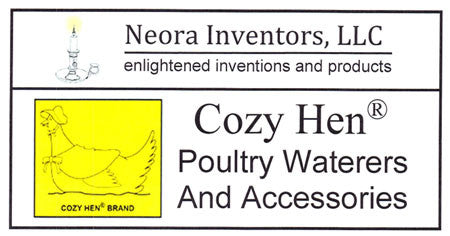How much water do chickens need?
Laying hens typically drink about 0.6 to 2 cups (about 140 to 500 ml or grams) per day. Water consumption depends on hen size, air temperature, humidity, and on age and age/rate of production. More water is needed in hot weather. [1-4]
Guidelines
Humane water temperature
Recommendations have been made by Humane Farm Animal Care's Care Standards (2014) for Egg Laying Hens. [5] The standards state that fresh water should be provided in all seasons, which include when freezing weather occurs. The recommended range of water temperature is 60 degrees F (16C) to 80 degrees F (27C). Water should not be too warm, namely above 100 degrees F (38C), and water should not be too cold, i.e., 50 degrees F (10C). It is noted that water consumption may drop if the water temperature is too warm or too cold. As the water to feed ratio is relatively constant, lower water consumption can result in lower feed intake. This can result in inadequate nutrition. (Note: the water to feed ratio, WFR, is typically in the range of 2 to 3.)
Bird-actuated drinkers are recommended
United Egg Producers' Animal Husbandry Guidelines for U.S. Egg Laying Flocks (2010) Edition) [6] have made recommendations for cage-free hens. These specify that water should be fresh and uncontaminated (for example, by feces), and the waterer or drinker should not be susceptible to spilling water. Also recommended are waterers or drinkers that deliver water by a bird-actuated lever. An example is a nipple drinker that can serve up to 10 hens per nipple. It is further recommended that steps be taken so that the birds learn how to operate the waterer. One approach is to use the same type of waterer in the hen house and with pullets. [Anecdotes on web blogs suggest that putting a lead hen under a nipple and showing her that water comes out will help her learn how to use the waterer. Once a lead hen uses the waterer, the others are likely to learn quickly, too.
Best water temperature for laying hens in hot weather
In a study of W-36 hens in warm air temperatures, water consumption was about 200 grams per hen per day with warm water and increased up to about 300 grams per hen per day with cool water. The hens not drank more cool water than warm water, but they tended to show better feed and well being. It appeared that there were also improvements in egg production and egg quality. The best results seemed to occur for water temperature within a few degrees of 73 degrees F (23C). [7]

